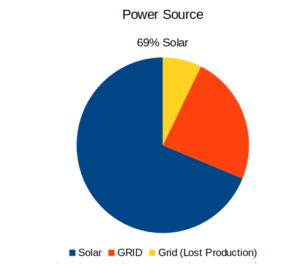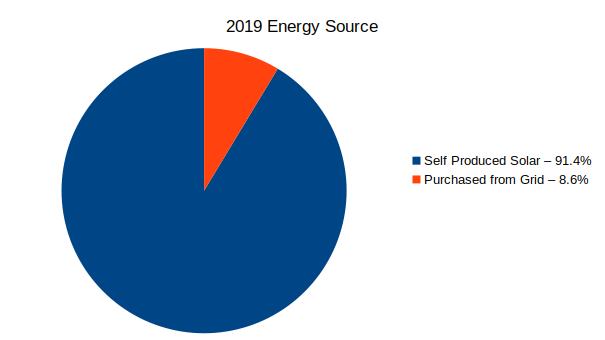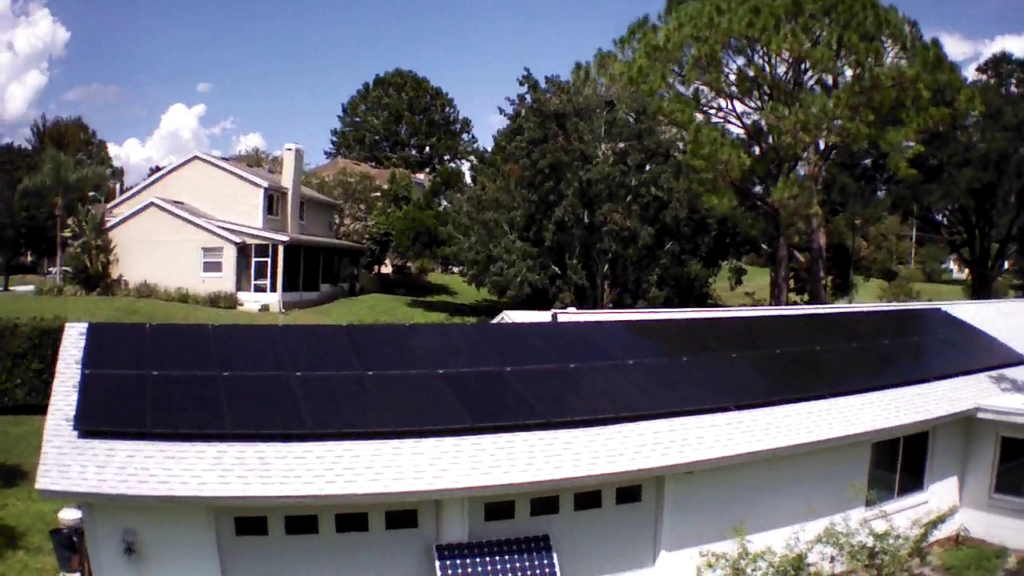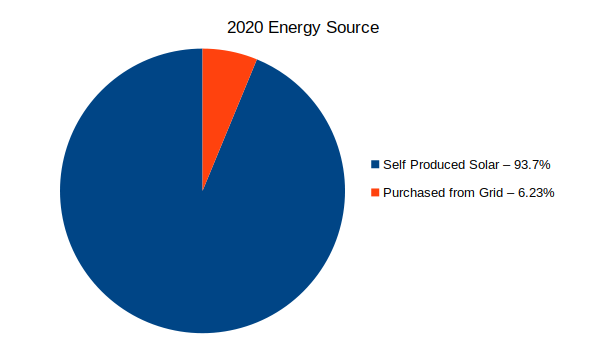Five months ago we turned on our new grid tie solar system and started to produce power.
Component Failures & Warranty Service
In the first five months, we have had two components replaced under warranty. The first was one of the 36 SolarEdge DC optimizer units (A $75 component with a 25 year warranty) that are mounted under each of the solar panels. The Solar Edge monitoring system had flagged that one of the optimizers was not reporting (and presumably also not producing power) and sent a message to our installer (3Guys Solar). They called me (before I even knew anything was wrong) and let me know they would be sending a crew out to climb up on the roof to replace it the next day, so that particular panel was down for only 2 days. The other 35 panels continued to produce power. The crew said that they sometimes have to replace several optimizers on a house, and some houses never have any fail.
The second component to fail was the system’s main DC->AC inverter, a 10kW Solar Edge grid tie inverter (a $2,000 component with a 12 year warranty). On October 23rd I noticed on the phone monitoring app that we had no power produced, so that night I went out and rebooted the inverter. The next day, 3Guys solar called me to report that they had received a fault code from the Inverter via the Solar Edge monitoring system and were working with Solar Edge to try and resolve the fault. The following day they called again to tell me that they would need to replace the inverter under warranty. Unfortunately, it took close to two weeks to receive the replacement unit from Solar Edge, so we were not producing solar power again until the 7th of November.
It was concerning to have the inverter fail within the first three months, but it is covered by a 12 year warranty, was replaced within two weeks and we haven’t had any problems since. 3 Guys Solar also sent us a check for $95 to cover the cost of the energy generation lost during this period. This is a limited time program, and was not part of their original install contract, so the check was not expected but appreciated. (By my estimates they overpaid us by 20-30$ for the energy the system wasn’t producing while the inverter was down.) The warranty coverage by 3Guys Solar (the installer) and Solar Edge (equipment manufacturer) left nothing to be desired. My expectation is that with solid state electrical equipment like this, most of the failures that are going to happen will happen early in the life-cycle (or very late in the lifecycle), and I hope the equipment will be stable now that we’ve gotten the early failures out of the way.
Power Generated & Usage
In this 5 month period, we generated 5096 kWh of solar power, and used 7405 kWh of electricity (paying for 2309 kWh from Duke, at a cost of $337.44 (-$95 credit from 3GS lowers this to $242.44)).
In the same 5 month period last year, we used and paid for 7378 kWh of electricity from Duke, (costing $977.81) so our usage appears to be closely correlated to before we had the solar system.
By averaging production between the week before and the week after, I estimate that in the 15 day period our inverter was down we should have produced an additional 540 kWh of power ( $70 of electricity at 13 cents per kWh). So without the inverter failure, we would have produced around 5636 of the 7405 kWh we used, or 76% of our total electricity usage via solar. [With the inverter failure, we were only at 69% of our power from the sun.] Our goal was to produce 80-90% of our electricity from the sun, so these numbers are close to our goal, and I hope that the sunny spring (and no more inverter failures) will raise our percentage.
From a cost perspective, because Duke Energy has a fixed customer charge, our solar cost savings is lower than percentage of power generated, and was a savings of between 65% to 75% off our electric bill.
Seasonal Effects on Future Predictions
Estimates made with less than a full year of solar data are going to be wildly inaccurate. The Aug->January time period is cooler than other months, so our AC usage will be lower, but there is also less solar production in the winter, meaning that our generation will be lower as well. The following numbers are a guess, and are much less accurate than those I hope to calculate after the system has been working for a full year.
Over the same 5 month period last year, the solar system has saved us between $640 and $735 (depending upon if you add in the non-contractually obligated 95$ check that 3Guys Solar sent us). This equates to an estimated payback period of 11 to 12.75 years. (The 1.75 years, or 14% difference in payback time is driven by the 13% difference in cost savings that $95 check equates to over the 5 month period.)
If it turns out that our solar system produces a much higher percentage of our usage in the sunny spring months, or if Duke Energy raises their rates, this payback period could drop. If we use too much AC in the summer, or Duke lowers their rates (?!?!) the payback period could increase. I’ll feel much more confident about the estimate after collecting a full year of usage and generation data. (And even then, solar generation and electrical usage can still vary year to year with the weather.)
Update: Read the 1 year report for a better set of annual numbers.





Pingback: Grid-Tie Solar System Pricing in Orlando – My shopping experience | Jay's Technical Talk
Jay, thanks for posting your initial production vs expectation results, good to see self-reported data from other homeowner systems.
Are you still hoping to post a ‘one-year’ update?
I just posted an update analyzing the full 2019 year. You can read it here:
https://www.summet.com/blog/2020/01/11/12-month-grid-tie-solar-system-report/